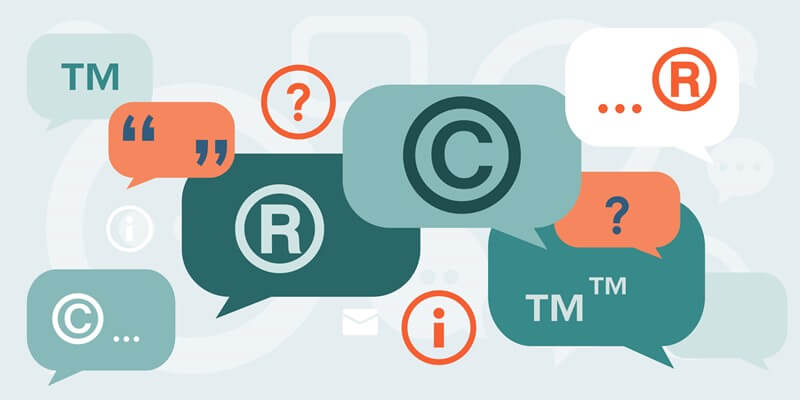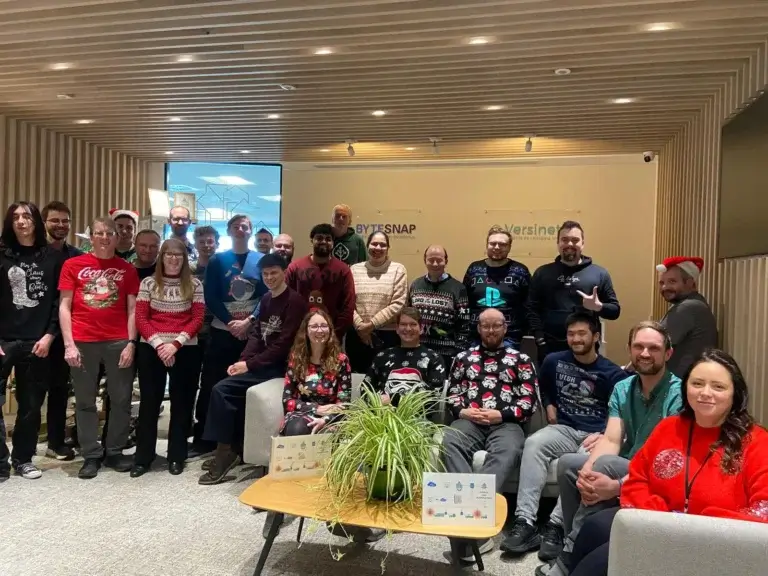TL;DR - Your Top Intellectual Property [IP] Queries Answered
Who owns the IP created during my electronics development project?
You should own all foreground IP (new designs created during the project) once you've paid in full. Your background IP (existing designs you brought) always remains yours. Generic IP (reusable modules like Bluetooth stacks) can be retained by the design house under non-exclusive licence.
What's the real risk if I don't secure IP ownership upfront?
Without clear IP ownership, you become locked to your supplier and cannot manufacture your own product independently. You'll also face lengthy delays and significant costs if you want to switch manufacturers or modify your design.
How does ByteSnap Design handle IP ownership?
At ByteSnap Design assign all foreground IP to you upon full payment completion. You retain your background IP throughout. We reserve non-exclusive rights only to generic modules that accelerate product development. We've had zero IP disputes since ByteSnap Design was founded back in 2008, so you're in safe hands.
Contents
Intellectual Property Explained: Background IP, Foreground IP and More
World Intellectual Property Day falls on 26th April; however, I’m asked about intellectual property ownership and protection all the time, so I’ve created this handy guide.
Being clear on your intellectual property is absolutely key to successful product development.
Disclaimer: Intellectual Property: Foreground IP vs Background IP has been written as a guide/explainer and does not constitute legal advice. It is provided for educational and research purposes only. It is your responsibility to obtain appropriate advice and legal services and to always read and fully understand all contracts, proposals, agreements, terms and conditions etc. of any development project you are considering.
Intellectual Property – what is it?
Within electronics and software product design, intellectual property (IP) chiefly refers to the laws, rules and principles governing the ownership, use and commercialization of inventions – in particular:
- patents – covering functional aspects of a product, process or invention
- design rights – protecting the visual appearance of a product and giving you exclusive rights for that appearance. These can be either registered or unregistered.
- trade mark – relating to business or product names, phrases and logos
Intellectual property should never be underestimated and always prioritised.
Whether you’re an inventor, company owner, developer or stakeholder, your IP is what distinguishes you in the market, keeps you competitive and grows your business.
Intellectual Property is a complex area covering trade secrets, trade marks, intellectual property protection, copyrighted works, etc. requiring the services of legal specialists.
Costs must also be carefully planned for. A UK patent, for instance, has no influence outside of the country; to protect your IP abroad, further patents would be necessary.
In research and development for electronics, software and industrial designs, there are four types of intellectual property:
- Background IP: any knowledge/IP supplied to the development team(s) / partner(s) at the start of an innovation project or collaboration.
- Foreground IP: knowledge/IP produced by the development team(s) / partner(s) during the project’s duration.
- Sideground IP: relevant knowledge/IP produced outside of a particular collaborative innovation project by any of its development partners
- Postground IP: knowledge produced after the end of a development or collaborative innovation project.
Background IP vs Foreground IP
A question we’re commonly asked is “Who will own the intellectual property that is generated if I work with ByteSnap?”
Here, we take you through the two types of IP, which we use in electronics product design contracts – background IP and foreground IP.

Background IP
Background IP is any intellectual property that existed before the contract started, and the parties own.
For example, a customer might come to us with a design of a lighting controller, and ask, “Can you make our next-generation lighting controller?”
The entire design of that original lighting controller is theirs. That doesn’t change.
The original design will always remain theirs.
Foreground IP
If we then do a design for them, paid by them, to generate their new lighting controller, that’s all foreground intellectual property.
That foreground IP is generated in the contract. Once they’ve paid for that, we will then assign them all that foreground IP, so they will then own all the IP.
Consequently, this will become part of their background IP on a future product design project.
In short, for any development that we do, we assign the intellectual property to you after full payment. We do not retain your IP.
However, we reserve the right to reuse generic IP between projects, in the sense of that we might design a part of the lighting control in the previous example – say the power supply – which we then use on a motor controller in another project.
There’s also Generic IP
The use of generic IP is commonplace among electronics and software design consultancies.
The reason consultancies are used in product design is that developments can be done more quickly and cost effectively – largely due to the use of generic IP.
It’s a bit of a touchy subject, particularly the reuse.
We’ve occasionally had businesses asking, “I’ve paid for you to do this design. What do you mean, you’re going to reuse it?”
No… we’re not referring to the background IP.
No, no, no – certainly not the foreground IP!
The generic IP – for the Bluetooth module? Yes; we reserve the right to reuse that bit of generic IP in the future, as is standard practice in electronics and software product design houses.
The fact is, design consultancies such as ByteSnap are continually building on previous experience. That helps us to grow, thrive, innovate – and, most importantly, bring value to customers.
Of course, building on previous experience is completely separate to designing a lighting controller for one company and then reselling the same design to someone else.
We would never, ever do that.
I’ve never heard of a UK design house doing that either; it’s unethical and, frankly, commercial suicide.
Common misconceptions around Foreground and Background Intellectual Property
Another one is that, in all the years the ByteSnap has been in operation, we’ve never actually had a conflict between two customers where they both wanted us to do exactly the same thing.
The fact is, customers always differentiate themselves.
Naturally, everyone wants something different. If something already exists in the market, it’s fairly unlikely someone is going want to do precisely the same design.
Our contracts mention background and foreground IP.
There are companies who carry out design work for people and then retain IP ownership at the end of the development.
Time and again, businesses have come to us having gone overseas for development work. They’ll have been quoted a low price for the development, and – happy with their apparent savings – they’ll get the project done.
However, the price will then creep up and continue rising… before they then realise that the design, they thought they owned, is, in fact, owned by the people who did the development.
They’re in the awkward and expensive position of being handcuffed to the IP developer/owner – and cannot manufacture the product without them.

You can avoid the unnecessary pain and excessive expense – a scenario that could even threaten your company’s future – by using a outsource development partner like ByteSnap – where you own the IP at the end of the project and upon account settlement.
It will be more expensive than those overseas developers in that real world scenario; but you will own the IP at the end of it. Meaning you can get the product manufactured by whoever you trust to do it to your standards.
Also, since you own the intellectual property, later you can go off and use another design company; you’re free to take it wherever you want, and do whatever you want with your IP. Your source files are released when you pay for them.
Whereas, if you go to one of these other companies, they might charge you less up front, but then they’ll have you handcuffed and they can keep raising the price whenever they wish. If you ever want to move your development, they’ll just say – “No, we own it.”.
We’ve seen this quite a few times.
Many companies are still incredibly naïve about this. They focus on the “bargain” price they’re paying for the development, rather than realizing the lower price is because they don’t own the IP.
Background IP vs Foreground IP: the main takeaways
- Get legal advice from specialist intellectual property lawyers. This is essential.
- Always prioritise and plan carefully for IP ownership. It will distinguish you from other companies, keep you competitive and help grow your business.
- You retain ownership of your background IP. Any design you bring to us is your background IP.
- You pay for us to develop foreground IP for you, when we are contracted as your outsource development partner.
- The contract includes a non-exclusive license to reuse generic portions of that in our work. This allows us to develop faster for you, the reuse of generic portions is a huge benefit when outsourcing electronics and software engineering.
- You will get assigned ownership of the foreground IP once all invoices are paid in full.
- Not all companies are the same as us however, so always, always check your IP ownership rights at the earliest opportunity.
It’s best to think long-term. For peace of mind, use a trusted, experienced outsource engineering team like ByteSnap, where – whether it be software, hardware or both – the intellectual property always ends up with you at the conclusion of your product development.
We’re more than happy to go through this with you when you enquire about engineering support for your design project.
How can ByteSnap help you today?
From start-ups to blue chips, ByteSnap’s embedded systems consultants help companies around the world to stay a step ahead by providing them with bespoke solutions. Contact us today and improve your competitive edge.

Dunstan is a chartered electronics engineer who has been providing embedded systems design, production and consultancy to businesses around the world for over 30 years.
Dunstan graduated from Cambridge University with a degree in electronics engineering in 1992. After working in the industry for several years, he co-founded multi-award-winning electronics engineering consultancy ByteSnap Design in 2008. He then went on to launch international EV charging design consultancy Versinetic during the 2020 global lockdown.
An experienced conference speaker domestically and internationally, Dunstan covers several areas of electronics product development, including IoT, integrated software design and complex project management.
In his spare time, Dunstan enjoys hiking and astronomy.




